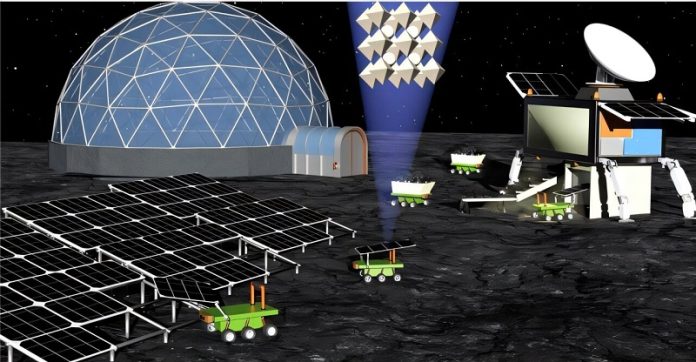
Moon dust—the same stuff that sticks to astronauts’ boots—may one day help power future lunar missions.
In a new study published in Device, scientists have shown that it’s possible to make solar panels using simulated moon dust.
These new solar cells can turn sunlight into energy efficiently, survive harsh space radiation, and could remove the need to carry heavy solar equipment from Earth.
Today’s space missions use very efficient solar cells, reaching up to 40% in energy conversion. But these solar panels are expensive and heavy because they include materials like glass or thick foils for protection.
According to lead researcher Felix Lang from the University of Potsdam in Germany, sending those panels into space takes a lot of money and effort.
His team wants to change that by making solar panels using materials already on the moon.
The moon’s surface is covered with loose rocks and dust, called regolith. Lang’s team melted a moon dust-like material into “moonglass” and used it to build solar panels.
These were combined with perovskite—a cheap and efficient material that easily converts sunlight into electricity. Perovskite solar cells are lighter and simpler to produce than traditional ones.
Using moon materials could cut the weight of solar panels sent from Earth by 99.4%, which would also cut transport costs by 99%. That would be a big help for future missions and permanent moon bases.
In fact, for every gram of material sent to the moon, the new solar panels could generate up to 100 times more energy than current panels.
The team tested the panels by exposing them to radiation levels found in space. Standard solar panel glass slowly turns brown in space, which blocks sunlight and lowers efficiency.
Moonglass, however, already has a natural brown color due to the impurities in moon dust, which actually helps make it more stable.
These moon-made panels resisted radiation damage better than Earth-made ones.
Another benefit is that moonglass is easy to make. It doesn’t need to be purified, and concentrated sunlight alone is enough to melt moon dust into glass. In lab tests, the new solar panels reached 10% efficiency. The researchers believe that with better glass and more improvements, they could get up to 23% efficiency.
There are still some challenges to face. The moon’s low gravity, vacuum environment, and extreme temperature swings could affect how the solar panels perform. To test the technology in real conditions, the team hopes to send a small experiment to the moon.
Lang believes this is another step in using moon dust in smart ways—from building shelters to making water fuel—and now, possibly, powering future moon cities with solar energy made right on the moon.
Source: Cell Press.



